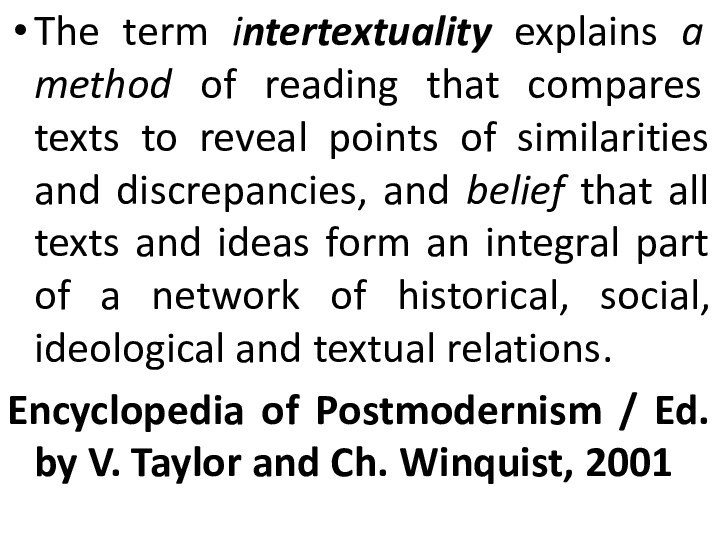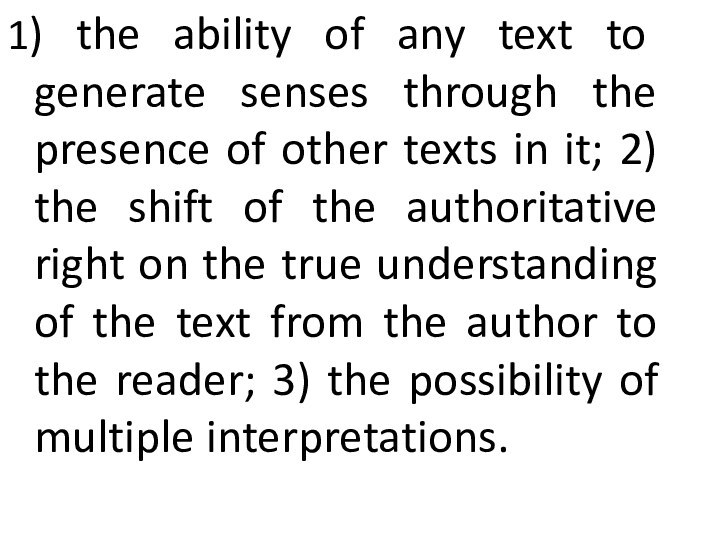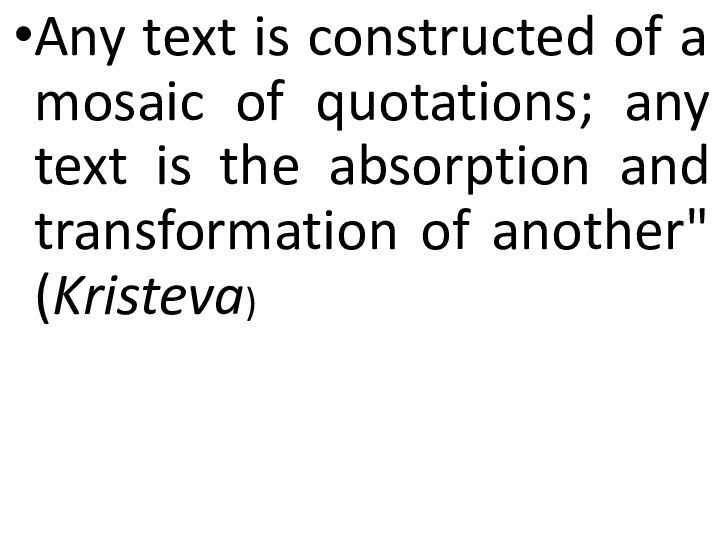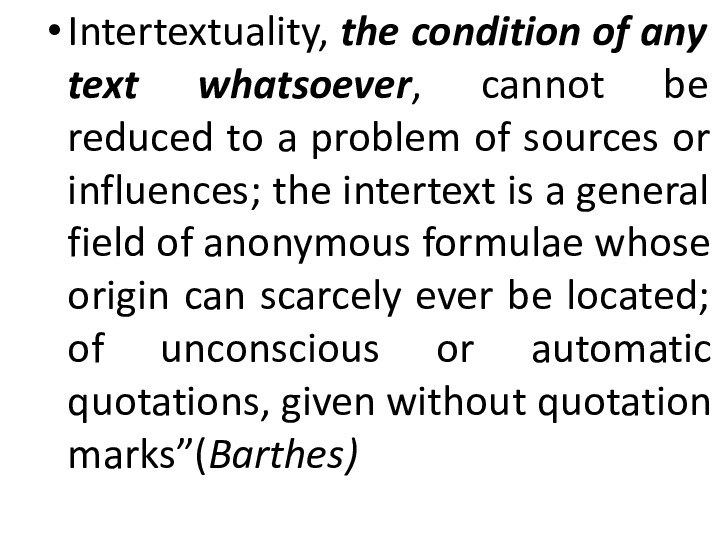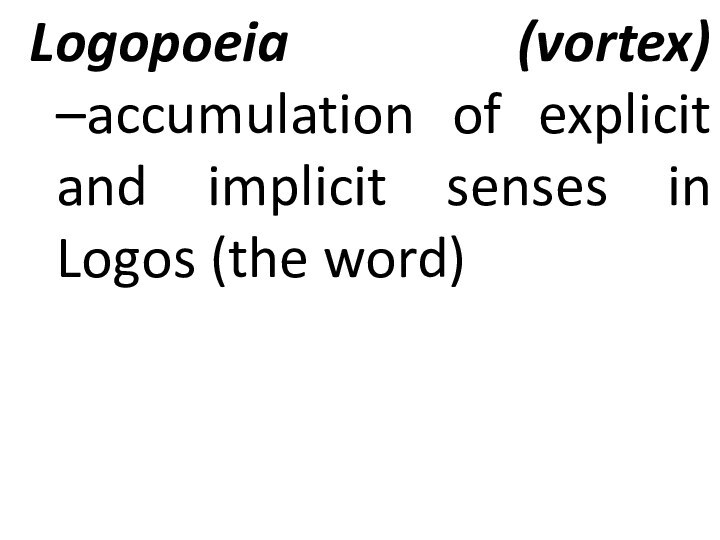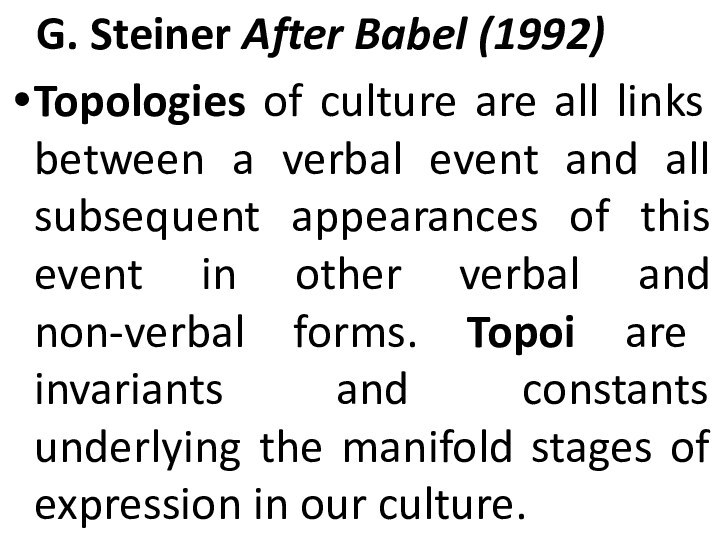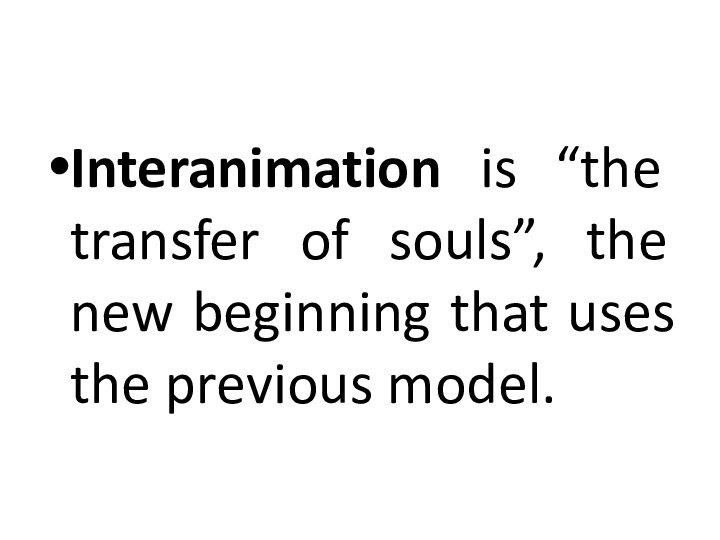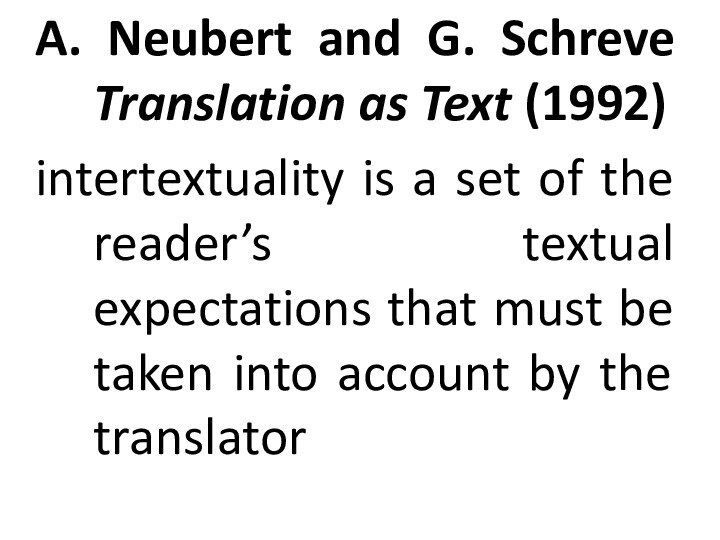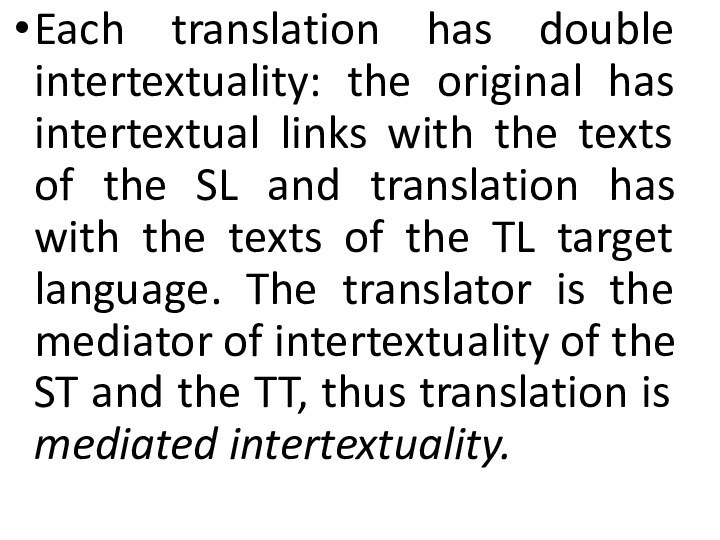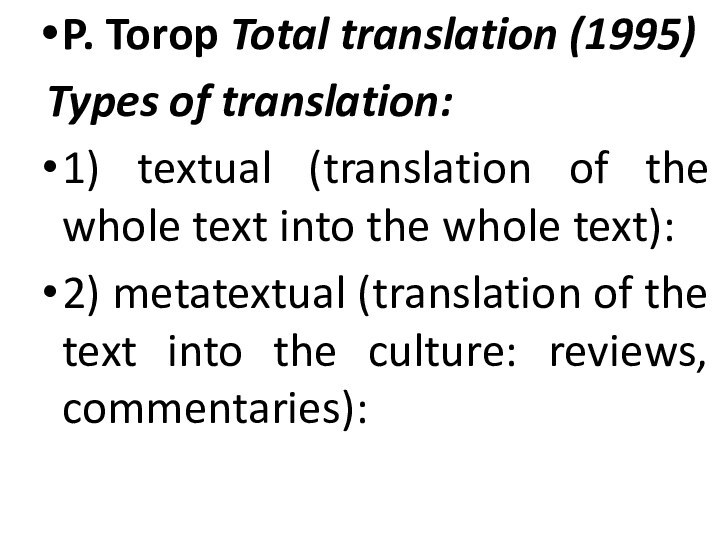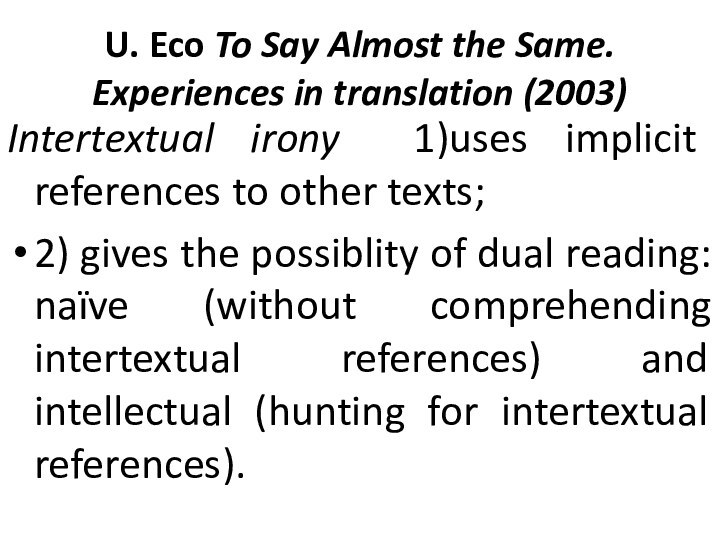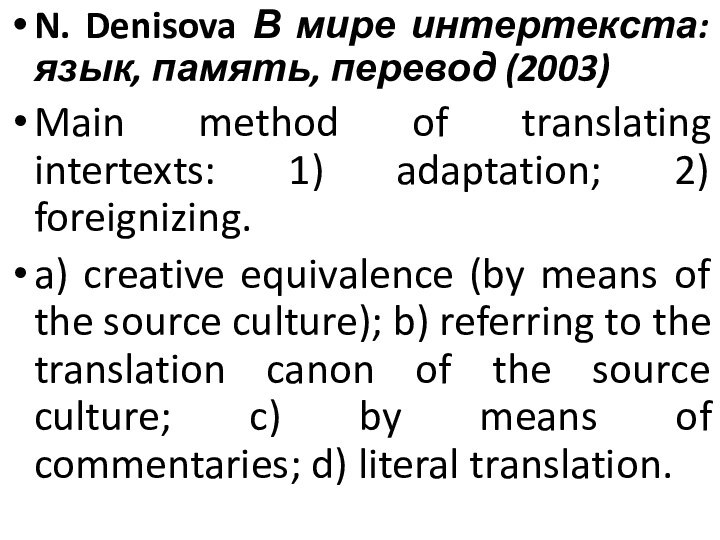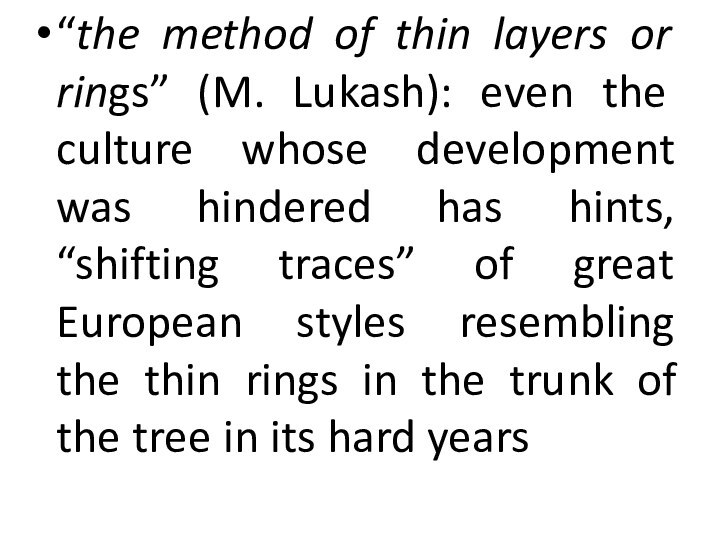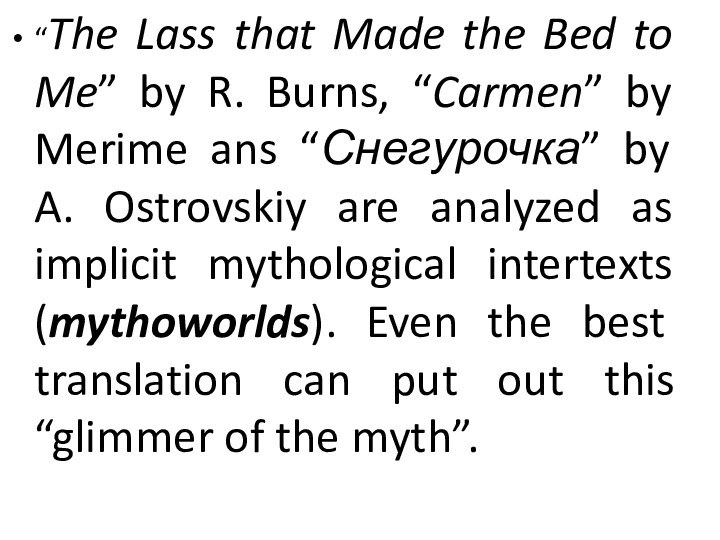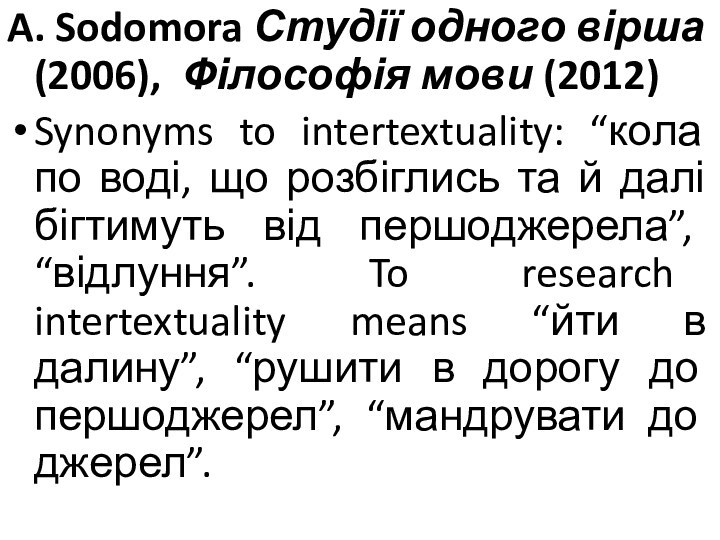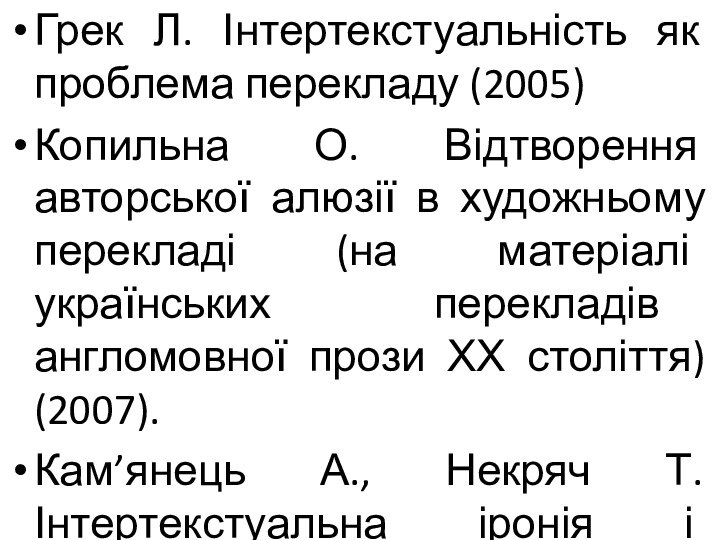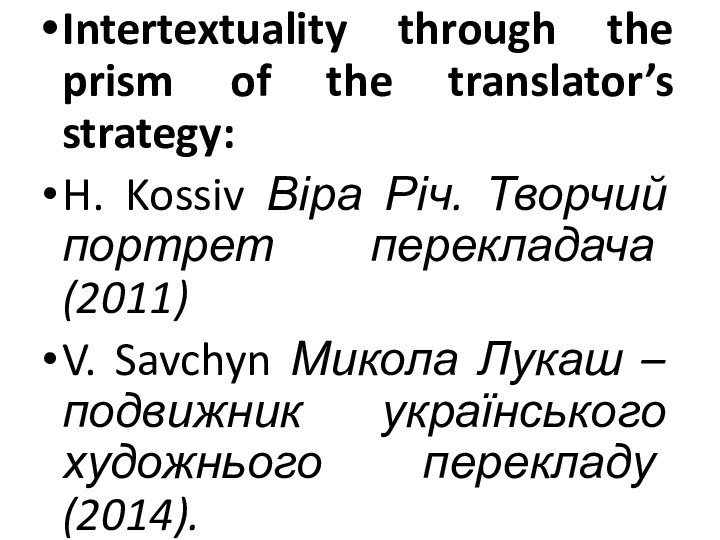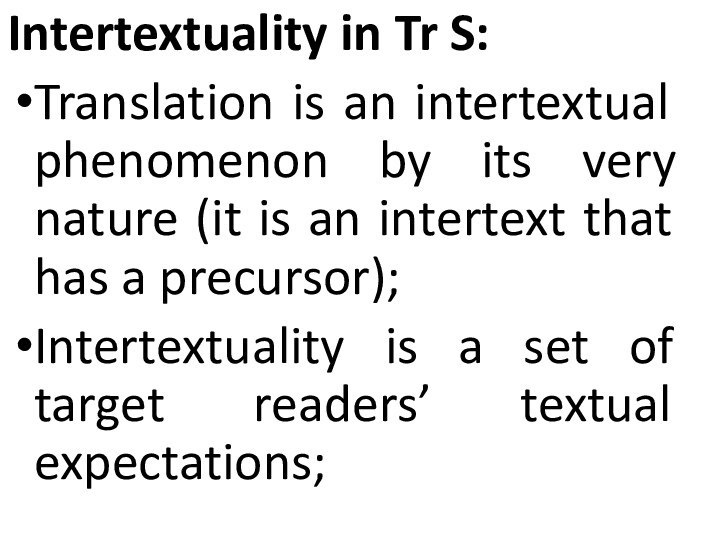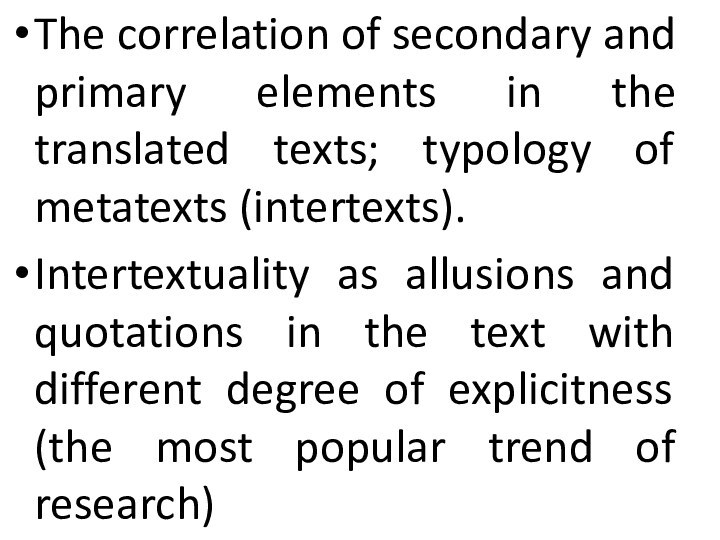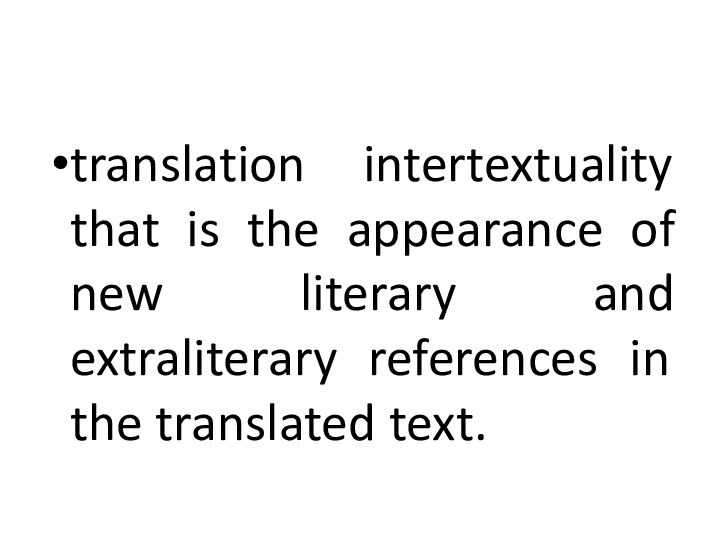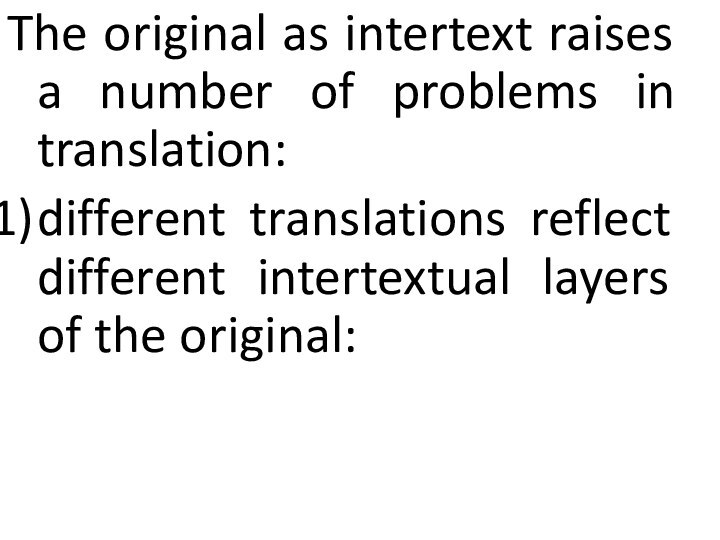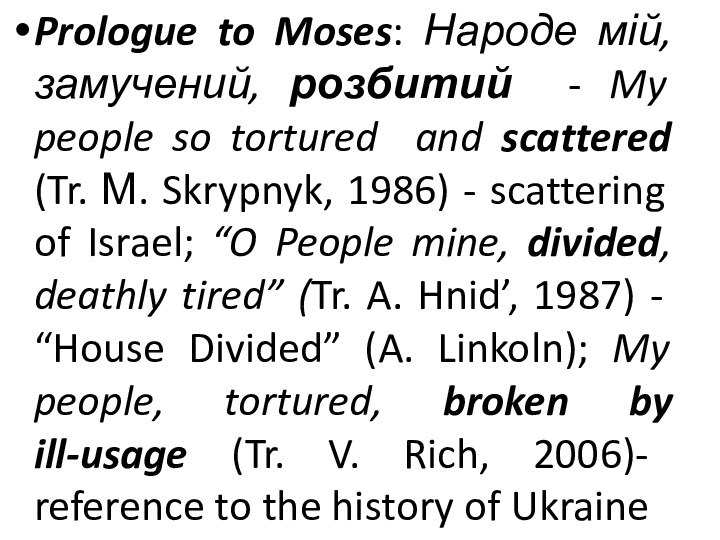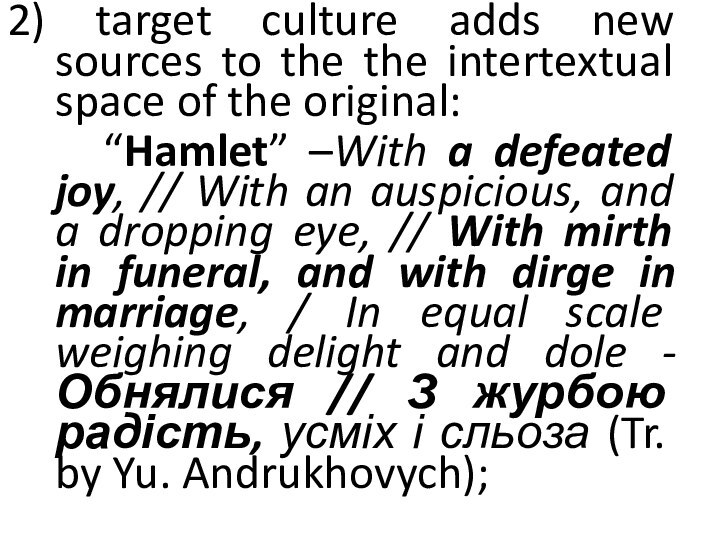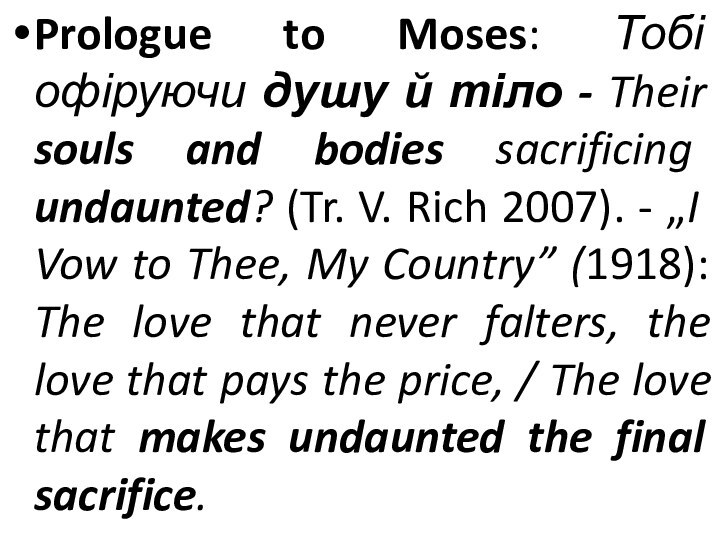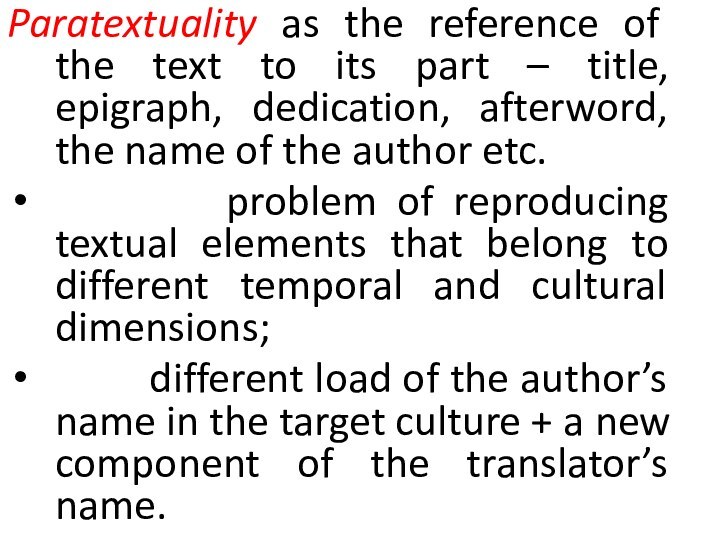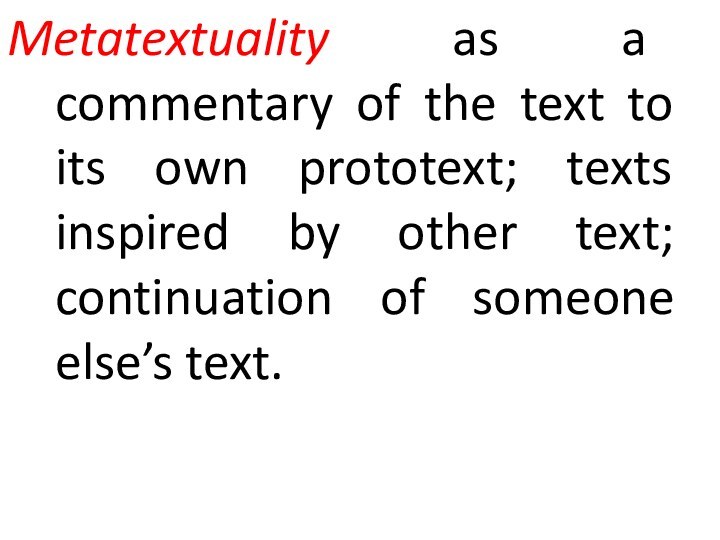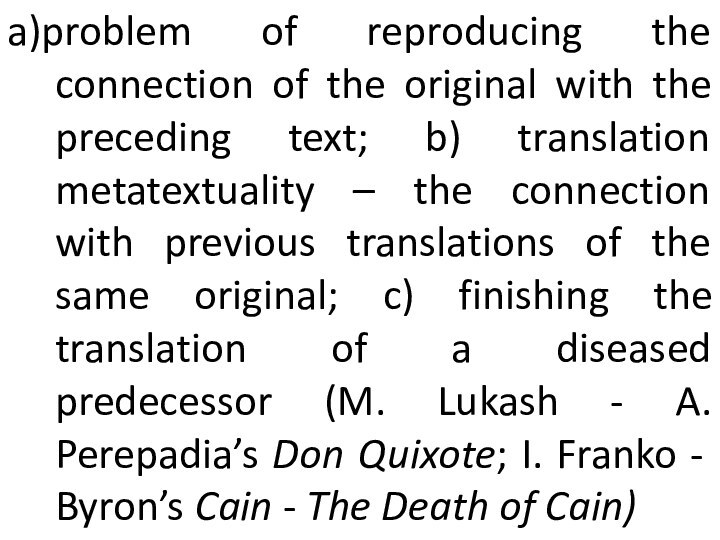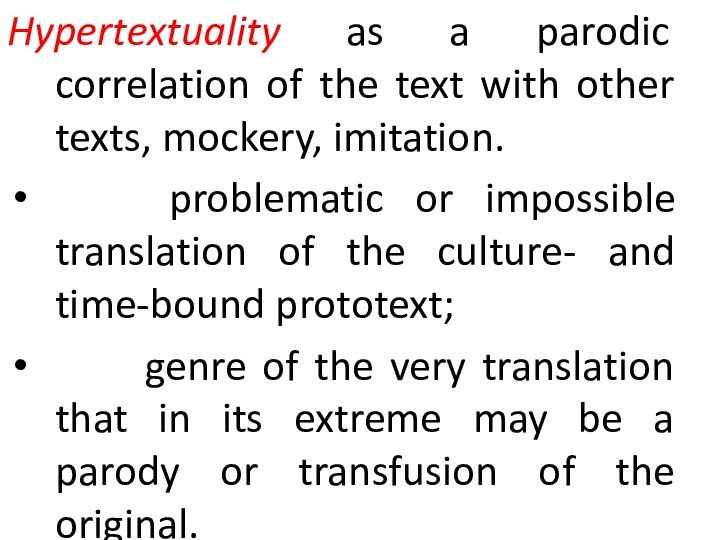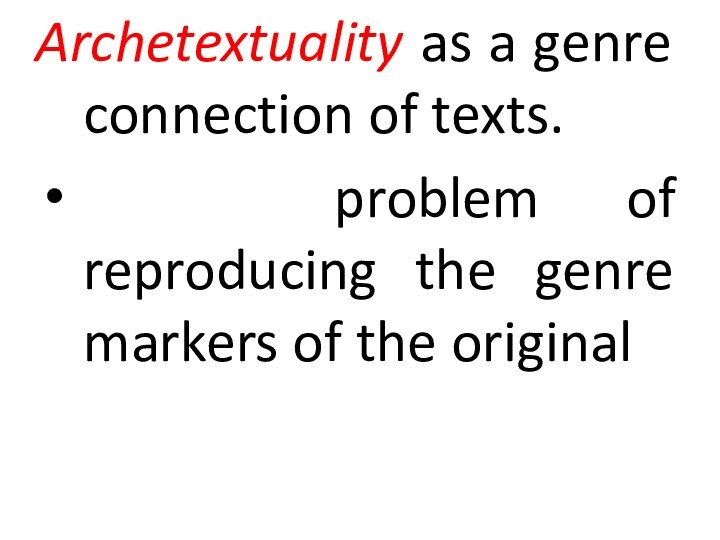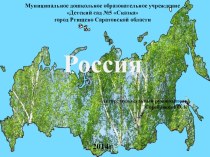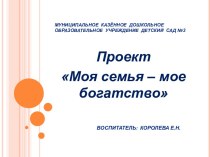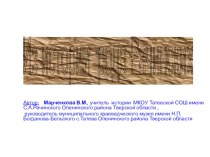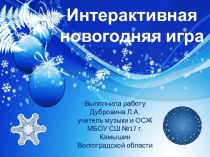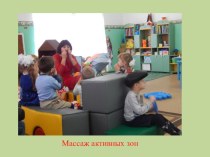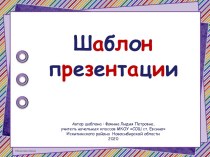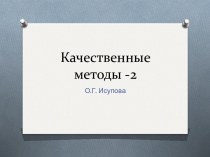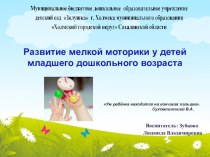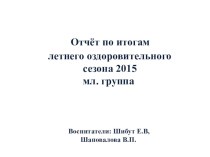Слайд 2
The term intertextuality explains a method of reading
that compares texts to reveal points of similarities and
discrepancies, and belief that all texts and ideas form an integral part of a network of historical, social, ideological and textual relations.
Encyclopedia of Postmodernism / Ed. by V. Taylor and Ch. Winquist, 2001
Слайд 3
1) the ability of any text to generate
senses through the presence of other texts in it;
2) the shift of the authoritative right on the true understanding of the text from the author to the reader; 3) the possibility of multiple interpretations.
Слайд 4
Any text is constructed of a mosaic of
quotations; any text is the absorption and transformation of
another" (Kristeva)
Слайд 5
Intertextuality, the condition of any text whatsoever, cannot
be reduced to a problem of sources or influences;
the intertext is a general field of anonymous formulae whose origin can scarcely ever be located; of unconscious or automatic quotations, given without quotation marks”(Barthes)
Слайд 6
Intertextuality in Ezra Pound’s interpretation:
Pound’s theory was based
upon the theory of the energy “vortex” in language;
words were seen not as signifiers but as subconscious associations, etymologies, sound effects etc.
Слайд 7
Logopoeia (vortex) –accumulation of explicit and implicit senses
in Logos (the word)
Слайд 8
Typology of secondary texts:
“interpretative translation” - a masterly
copy of the original structure; it “it shows where
the treasure lies”
“the other sort” - “where the translator is definitely making a new poem”
Слайд 9
A. Popovic Aspects of metatext (1976)
Intertextual continuity in
the language system: metacommunication covers all types of the
ST reception: by critics, translators, readers, reviewers.
Affirmative and controversial metatexts.
Слайд 10
Hatim B., Mason I. Discourse and the Translator
(1990)
. In the process of translation the intertextual reference
is perceived as primarily a pragmatic unit while its denotative meaning is of secondary importance.
Слайд 11
G. Steiner After Babel (1992)
Topologies of
culture are all links between a verbal event and
all subsequent appearances of this event in other verbal and non-verbal forms. Topoi are invariants and constants underlying the manifold stages of expression in our culture.
Слайд 12
Interanimation is “the transfer of souls”, the new
beginning that uses the previous model.
Слайд 13
A. Neubert and G. Schreve Translation as Text
(1992)
intertextuality is a set of the reader’s textual
expectations that must be taken into account by the translator
Слайд 14
Each translation has double intertextuality: the original has
intertextual links with the texts of the SL and
translation has with the texts of the TL target language. The translator is the mediator of intertextuality of the ST and the TT, thus translation is mediated intertextuality.
Слайд 15
P. Torop Total translation (1995)
Types of translation:
1) textual (translation of the whole text into the
whole text):
2) metatextual (translation of the text into the culture: reviews, commentaries):
Слайд 16
3)intertextual (translation of sb else’s word or the
whole complex of words by the author);
4) extratextual (use
other means of communication: films)
Слайд 17
U. Eco To Say Almost the Same. Experiences
in translation (2003)
Intertextual irony 1)uses implicit references to other
texts;
2) gives the possiblity of dual reading: naïve (without comprehending intertextual references) and intellectual (hunting for intertextual references).
Слайд 18
N. Denisova В мире интертекста: язык, память, перевод
(2003)
Main method of translating intertexts: 1) adaptation; 2) foreignizing.
a)
creative equivalence (by means of the source culture); b) referring to the translation canon of the source culture; c) by means of commentaries; d) literal translation.
Слайд 19
М. Novikova Міфи та місія (2005)
“Переклад перетворив усі
сюжети літератури в міжнародні і блукаючі, всіх письменників (вкупі
з їх багатомовними перекладачами) – в «оповідачів», а всі національні мови й культури задіяв у прямий діалог, де співрозмовники говорять по-різному про єдине”.
Слайд 20
“the method of thin layers or rings” (M.
Lukash): even the culture whose development was hindered has
hints, “shifting traces” of great European styles resembling the thin rings in the trunk of the tree in its hard years
Слайд 21
“The Lass that Made the Bed to Me”
by R. Burns, “Carmen” by Merime ans “Снегурочка” by
A. Ostrovskiy are analyzed as implicit mythological intertexts (mythoworlds). Even the best translation can put out this “glimmer of the myth”.
Слайд 22
A. Sodomora Студії одного вірша (2006), Філософія мови
(2012)
Synonyms to intertextuality: “кола по воді, що розбіглись та
й далі бігтимуть від першоджерела”, “відлуння”. To research intertextuality means “йти в далину”, “рушити в дорогу до першоджерел”, “мандрувати до джерел”.
Слайд 23
Грек Л. Інтертекстуальність як проблема перекладу (2005)
Копильна О.
Відтворення авторської алюзії в художньому перекладі (на матеріалі українських
перекладів англомовної прози ХХ століття) (2007).
Кам’янець А., Некряч Т. Інтертекстуальна іронія і переклад (2010).
Слайд 24
Intertextuality through the prism of the translator’s strategy:
H.
Kossiv Віра Річ. Творчий портрет перекладача (2011)
V. Savchyn
Микола Лукаш – подвижник українського художнього перекладу (2014).
Слайд 25
Intertextuality in Tr S:
Translation is an intertextual phenomenon
by its very nature (it is an intertext that
has a precursor);
Intertextuality is a set of target readers’ textual expectations;
Слайд 26
The correlation of secondary and primary elements in
the translated texts; typology of metatexts (intertexts).
Intertextuality as allusions
and quotations in the text with different degree of explicitness (the most popular trend of research)
Слайд 27
translation intertextuality that is the appearance of new
literary and extraliterary references in the translated text.
Слайд 28
The original as intertext raises a number of
problems in translation:
different translations reflect different intertextual layers
of the original:
Слайд 29
Prologue to Moses: Народе мій, замучений, розбитий -
My people so tortured and scattered (Tr. М. Skrypnyk,
1986) - scattering of Israel; “O People mine, divided, deathly tired” (Tr. A. Hnid’, 1987) - “House Divided” (A. Linkoln); My people, tortured, broken by ill-usage (Tr. V. Rich, 2006)- reference to the history of Ukraine
Слайд 30
2) target culture adds new sources to the
the intertextual space of the original:
“Hamlet”
–With a defeated joy, // With an auspicious, and a dropping eye, // With mirth in funeral, and with dirge in marriage, / In equal scale weighing delight and dole - Обнялися // З журбою радість, усміх і сльоза (Tr. by Yu. Andrukhovych);
Слайд 31
Prologue to Moses: Тобі офіруючи душу й тіло
- Their souls and bodies sacrificing undaunted? (Tr. V.
Rich 2007). - „I Vow to Thee, My Country” (1918): The love that never falters, the love that pays the price, / The love that makes undaunted the final sacrifice.
Слайд 32
G. Genette (Palimpsests: Literature in the second degree,
1982) - types of intertextuality:
1) Intertextuality as the “co-presence”
of two or more texts in one text.
problem of reproducing quotations, allusions and associations.
Слайд 33
Paratextuality as the reference of the text to
its part – title, epigraph, dedication, afterword, the name
of the author etc.
problem of reproducing textual elements that belong to different temporal and cultural dimensions;
different load of the author’s name in the target culture + a new component of the translator’s name.
Слайд 34
Metatextuality as a commentary of the text to
its own prototext; texts inspired by other text; continuation
of someone else’s text.
Слайд 35
a)problem of reproducing the connection of the original
with the preceding text; b) translation metatextuality – the
connection with previous translations of the same original; c) finishing the translation of a diseased predecessor (M. Lukash - A. Perepadia’s Don Quixote; I. Franko - Byron’s Cain - The Death of Cain)
Слайд 36
Hypertextuality as a parodic correlation of the text
with other texts, mockery, imitation.
problematic or
impossible translation of the culture- and time-bound prototext;
genre of the very translation that in its extreme may be a parody or transfusion of the original.
Слайд 37
Archetextuality as a genre connection of texts.
problem of reproducing the genre markers of the
original

